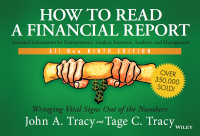pay, and a bondholder's required retur Remember, a bond's coupon rate partially determines the interest-based return that a bond willy reflects the return that a bondholder would like to receive from a given investment. The mathematics of bond valuation imply a predictable relationship between the bond's coupon rate, the bondholder's required return, the bond's par value, and its intrinsic value. These relationships can be summartred as follows: . When the band's coupon rate is equal to the bondholder's required return, the bond's intrinsic value will equal its par value, and the band will trade at par When the band's coupon rate is greater than the bondholder's required return, the bond's intrinsic value will exceed its par value, and the bond will trade at a premium. When the bond's coupon rate is less than the bondholder's required return, the band's intrinsic value will be less than its par value, and the bond will trade at a discount For example, assume Over wants to earn a return of 12.00% and is offered the opportunity to purchase a $1,000 par value bond that pays a 10.00% coupon rate (distributed semiannually) with three years remaining to maturity. The following formula can be used to compute the bond's intrinsic value: + Intrinsic Value - GACH he Complete the following table by identifying the appropriate corresponding variables used in the equation. (1+0 ISIC Value = (10) (140 (104 60 Complete the following table by identifying the appropriate corresponding variables used in the equation. Unknown Variable Name Bond's semiannual coupon payment Variable Value $50.00 $1,000 B Bond's par value Based on this ed Bond's market price to expect that Oliver's potential bond investment is currently exhibiting an intrinsic value less than Semiannual coupon payment Now, consider the situation in which Oliver wants to earn a return of 13%, but the bond being considered for purchase offers a coupon rate of 10.00%. Again, assume that the bond pays semiannual interest payments and has three years to maturity. If you round the band's intrinsic value to the nearest whole dollar, then its intrinsic value of (rounded to the nearest whole dollar) is its par value, so that the bond is Given your computation and condusions, which of the following statements is true? A bond should trade at a par when the coupon rate is greater than Oliver's required return When the coupon rate is greater than Oliver's required return, the bond should trade at a discount. When the coupon rate is greater than Oliver's required return, the bond should trade at a premium, When the coupon rate is greater than Oliver's required return, the bond's intrinsie value will be less than its par value








